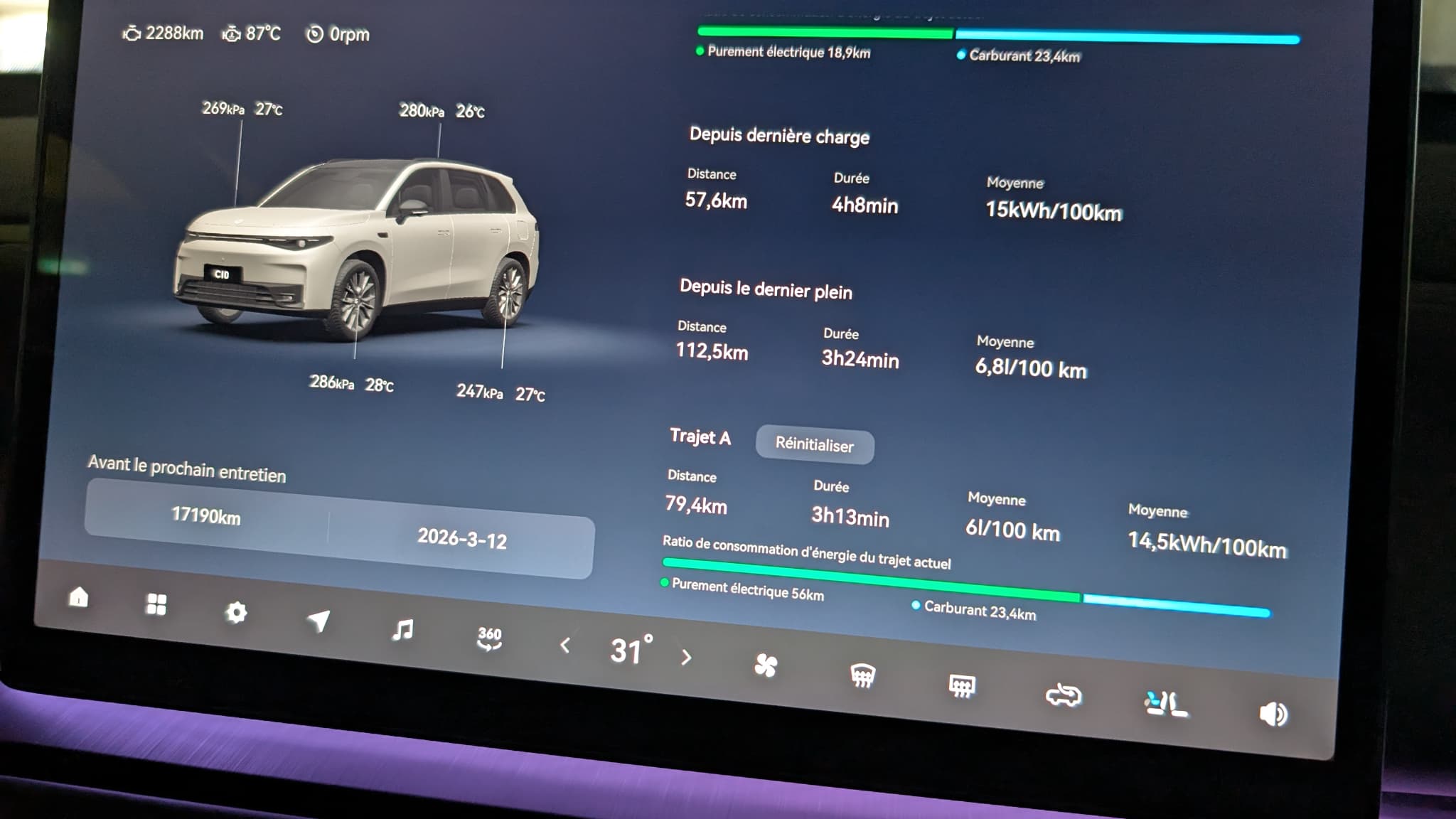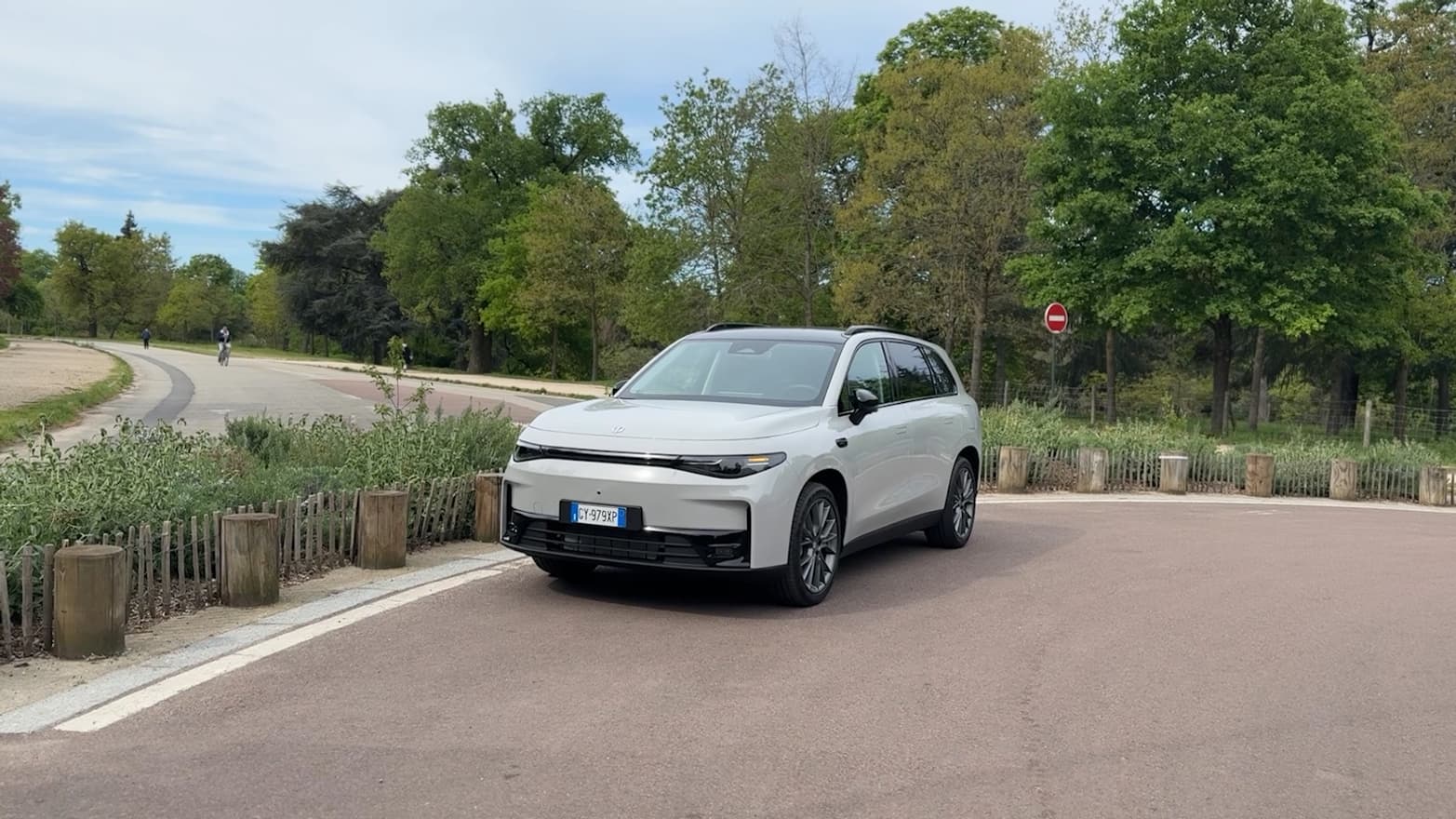It is a motorization that returns this year in Europe: electric cars with a variety of autonomy.
We immediately think of a certain BMW I3, a pioneer of the Electric released in 2013, with a “REX” version (for “rank extensor”, extension extension) that made it possible to double its range of approximately 150 to 300 kilometers.
The secret: a small double cylinder engine and a nine -liter gasoline tank capable of recharging the battery. A version that was no longer offered since 2018, the battery has become much more important in the I3 and the network of load stations that have been developed.
Why a “reev” C10?
Therefore, we are surprised to see that this technology returns, while electric cars today benefit from a much greater autonomy than ten years ago. But this is the case, with the leapmotor C10 that we could try in the “Reev” version (for “Range Extender Electric Vehicle”).
The Chinese brand, which is based on Stellantis for its international sales and, therefore, its development in Europe, has launched its C10 last year in the 100% version (which is here in the test).

This great family SUV 4.79 meters long had caused a good impression In terms of driving and comfort of the team. Only a notable inconvenience: a GPS not very developed, which is problematic, especially when it does not have (now) Android Auto/Carplay to find Waze or Google Maps. This was not yet the case of our C10 Reev tested in April 2025, with the promise of a smartphone replication solution (a priori, no Android Auto or Carplay) that would arrive through an update this summer. Case to follow …

The idea was mostly here to test this unprecedented engine that offers an interesting commitment on paper, especially for those who would be reluctant to 100% electric. Hence the current success of hybrid engines.
A small battery compensated by a heat engine
The 100% electric battery C10 was a bit limited: 70 kWh, or 420 kilometers of official autonomy, this is still a bit tight in a family SUV, especially with a power of only 83 kW.
Therefore, the C10 Reev is supposed to correct the shot: the battery sees its capacity considerably reduced to 24.4 kWh, or 145 kilometers of official autonomy. But the thermal engine, a four -liter cylinder of 1.5 liters of 50 kW, can recharge the battery to add 825 kilometers in “thermal”. Or a total autonomy of 970 kilometers, impossible to find in 100% electric.

Important precision: This heat engine only recharges the battery, which supplies the 158 kW electric motor (214 horsepower). Therefore, it cannot strictly promote, says the vehicle.
Advantage of this technology: “The recharge times”, with a tank full of 50 liters, but also an exit that allows the battery to load with a power of 65 kW. Enough to move from 30 to 80% battery in 18 minutes, a much faster time than rechargeable hybrid hybrid models (7.4 kW in a Peugeot 5008, 11 kW in a BMW X3).
Four energy modes, instructions for use
Our complete test is in the last route issue for tomorrow’s broadcast this Saturday, April 26, but this is what you should remember.
In 100% electric, we find the qualities of Electric C10, with a good relationship between dynamism and comfort. To stay electric, we use the first “energy mode” in the four offered: “EV+” modewhich guarantees to roll in electricity of up to 9% battery.
It is also necessary to be quite good in the mental calculation because autonomy remains in kilometers: therefore, we expected to hear the heat engine that is activated around the remaining 13 kilometers.

This is what happened, with a sound of this thermal part quite strong at the beginning, surely due to the fact that we were riding on a road at 110 km/h: the need for energy should push the thermal engine to send a lot of power to recharge the battery. We have also felt a loss of power quite strong in this scenario, with a slower vehicle in its accelerations.
By staying in “EV+” in these conditions and in traffic in the city center, the vehicle finds conventional hybrid behavior, with a much more discreet heat engine.
Another way, baptized “EV”It also makes it possible to maximize this pipe, but being a bit more conservative in electrical autonomy, activating the thermal engine when one falls below 25% (or approximately 36 remaining kilometers).
Emptied battery, we tried the third energy mode, mode “Fuel”. It will significantly allow you to customize this battery percentage that will activate the thermal engine (between 30% and 90%). Inevitably, when you stop, at the beginning we are strongly overset, but it allows you to load the battery without having to connect.
Finally, one last way, “Pons+”It allows you to ask the thermal engine to work at full speed to have a fairly busy battery in winter or drive on a road.
A fairly complex operation that can lack information about this rocking chair in the thermal part that is not really informed to the driver. Concession sellers will have to show great pedagogy about the use of the vehicle.
What consumption and what price?
As in rechargeable hybrids, interest remains most of its trips in the only battery, taking care of home or at the workplace in the ideal. 145 kilometers, this is still quite weak, but a priori sufficient daily for a large majority of drivers. With here the use of the family given the template of the vehicle.
More than 175 kilometers, this C10 Reev showed 6.8 liters and 14.9 kWh per 100 kilometers, a fairly honorable evaluation for a SUV of almost two tons.
On the price side, Leapmotor offers this model of 37,400 euros. Count 40,000 euros for our test model at the second finish level.
Except that it is necessary to add the penalty of penalty, which recently affects the rechargeable hybrid models to which this C10 Reev is assimilated, with up to 2,390 euros more in the final grade.
Which finally makes the C10 100% electricity much more attractive, from 36,400 euros and still save for this weight penalty.
Source: BFM TV


